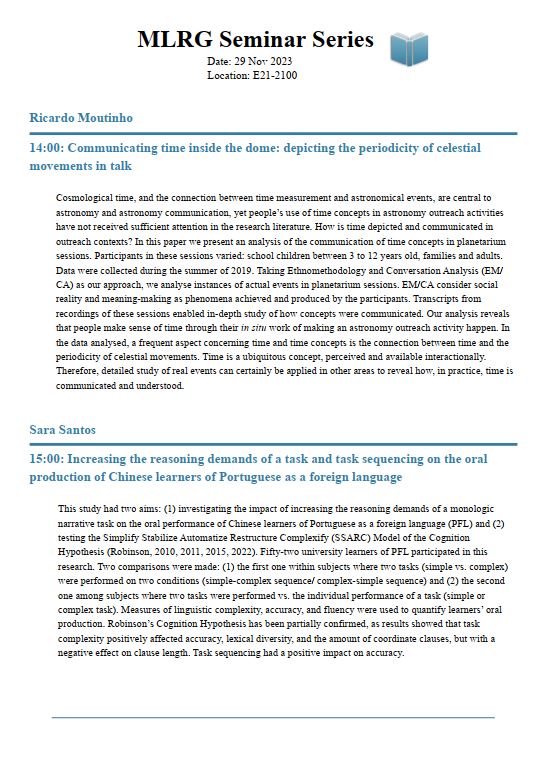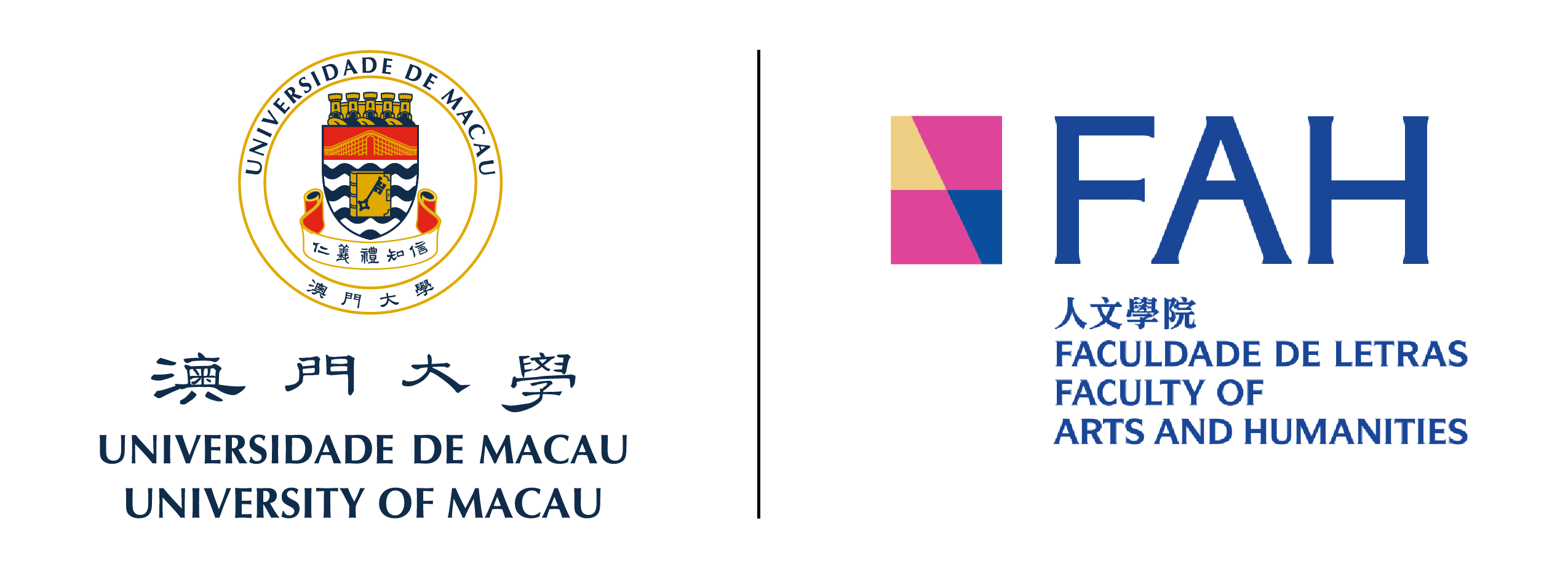

MLRG Seminar Series
2023-11-29 @ 2:00 pm ~ 5:00 pm
Ricardo Moutinho
14:00: Communicating time inside the dome: depicting the periodicity of celestial movements in talk
Cosmological time, and the connection between time measurement and astronomical events, are central to astronomy and astronomy communication, yet people’s use of time concepts in astronomy outreach activities have not received sufficient attention in the research literature. How is time depicted and communicated in outreach contexts? In this paper we present an analysis of the communication of time concepts in planetarium sessions. Participants in these sessions varied: school children between 3 to 12 years old, families and adults. Data were collected during the summer of 2019. Taking Ethnomethodology and Conversation Analysis (EM/ CA) as our approach, we analyse instances of actual events in planetarium sessions. EM/CA consider social reality and meaning-making as phenomena achieved and produced by the participants. Transcripts from recordings of these sessions enabled in-depth study of how concepts were communicated. Our analysis reveals that people make sense of time through their in situ work of making an astronomy outreach activity happen. In the data analysed, a frequent aspect concerning time and time concepts is the connection between time and the periodicity of celestial movements. Time is a ubiquitous concept, perceived and available interactionally. Therefore, detailed study of real events can certainly be applied in other areas to reveal how, in practice, time is communicated and understood.
Sara Santos
15:00: Increasing the reasoning demands of a task and task sequencing on the oral production of Chinese learners of Portuguese as a foreign language
This study had two aims: (1) investigating the impact of increasing the reasoning demands of a monologic narrative task on the oral performance of Chinese learners of Portuguese as a foreign language (PFL) and (2) testing the Simplify Stabilize Automatize Restructure Complexify (SSARC) Model of the Cognition Hypothesis (Robinson, 2010, 2011, 2015, 2022). Fifty-two university learners of PFL participated in this research. Two comparisons were made: (1) the first one within subjects where two tasks (simple vs. complex) were performed on two conditions (simple-complex sequence/ complex-simple sequence) and (2) the second one among subjects where two tasks were performed vs. the individual performance of a task (simple or complex task). Measures of linguistic complexity, accuracy, and fluency were used to quantify learners’ oral production. Robinson’s Cognition Hypothesis has been partially confirmed, as results showed that task complexity positively affected accuracy, lexical diversity, and the amount of coordinate clauses, but with a negative effect on clause length. Task sequencing had a positive impact on accuracy.

